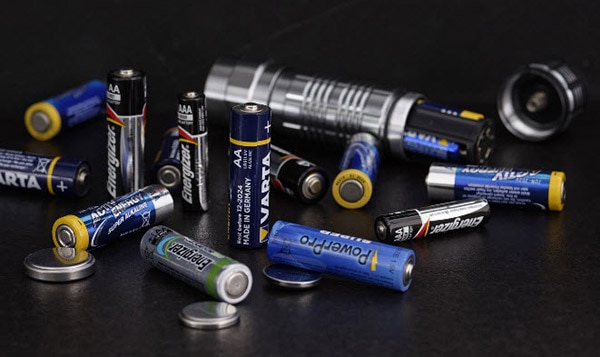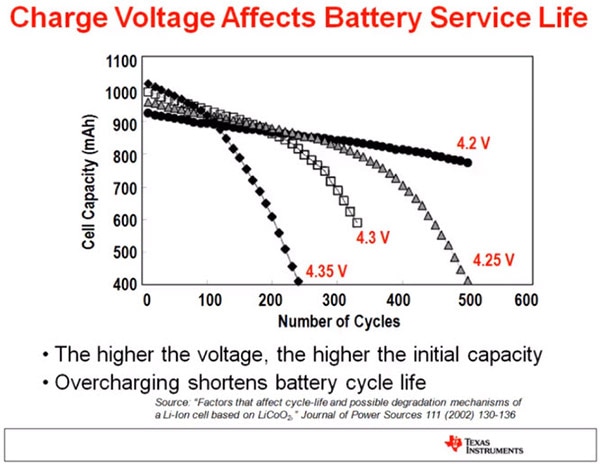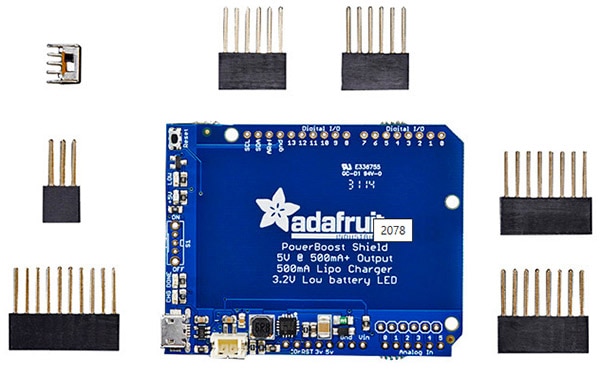How To Maintain Optimum Battery Health and Performance
2024-06-26 | By Maker.io Staff

As batteries have become progressively smaller and more affordable, you can incorporate them in increasingly complex portable projects. However, unlike consumer electronics, these projects often utilize the bare cells without the included protection circuits in off-the-shelf electronics. Therefore, you must take good care of the batteries in your projects if you want them to operate at optimum performance for as long as possible.
How Heat Affects Battery Degradation
It’s important to remember that all batteries are ultimately consumable items, regardless of their quality or durability, meaning they inevitably degrade over time when used. However, you can ensure your battery cells last as long as possible without compromising performance by understanding the leading causes of rapid degradation and how to prevent them.
High temperatures are a significant cause of fast degradation in practice. They influence the speed of the chemical reactions taking place in battery cells, potentially leading to increased electrode and electrolyte degradation when not handled appropriately. In some extreme cases, overly high temperatures can lead to immediate cell failure, which, in the worst case, can result in batteries catching fire. However, prolonged exposure to high temperatures leads to faster battery degradation, even in less severe instances.
Electrical Stress Influences Battery Life
Excessively high current draw also increases battery cell degradation in different ways. First, high currents increase thermal losses and cell temperatures. Additionally, high currents can cause electrolyte breakdown and lead to the formation of tiny gas bubbles that raise the battery’s internal pressure, resulting in elevated internal resistance, voltage drops, and decreased efficiency. Moreover, overly high currents can lead to metal plating and dendrite formation on the electrode surfaces, potentially posing safety hazards.
Under- and overvoltage conditions can have similar detrimental effects on battery health. Undervoltage problems mainly occur when batteries are stored away for prolonged periods or when the powered device does not shut down when the batteries are discharged. Dropping cells below their rated minimum voltage can lead to the degradation of the electrolyte and potential solid-deposit and dendrite formations, which can, in severe cases, cause internal short circuits and render the cell useless. Usually, short-term exposure to low voltages does not cause serious harm to cells and recharging them promptly typically restores their capacity.
Similarly, overcharging cells can result in various problems, such as material degradation and excessive heat production. Most batteries are much more susceptible to overcharging, and consistently exceeding a cell’s recommended maximum voltage by as little as 50 mV can lead to rapid degradation and severe capacity loss.
 Overcharging batteries initially improves cell capacity.
Overcharging batteries initially improves cell capacity.
However, in the long run, the practice quickly degrades batteries at a much faster rate than keeping the battery within recommended conditions. The chart above shows that a battery consistently charged to 4.35V loses half its capacity after only 250 cycles, while a battery charged to the recommended 4.2V retains most of its capacity even after twice as many cycles.
Batteries Require Physical Protection
Physical damage is a constant threat to delicate battery cells, as they are commonly found in small, portable devices like smartwatches and handheld devices. Seemingly negligible damage to the outside shell can have significant consequences due to the cell’s intricate internal structure. Batteries contain tightly packed layers of electrodes and separators, and any damage can potentially lead to internal short circuits. In most cases, such damage degrades the cell’s performance by disrupting the ion flow during charging and discharging, resulting in uneven stress distribution within the cell and, ultimately, capacity loss. However, if severe enough, gauges and punctures can result in excessive localized heating and, in extreme cases, thermal runaway. As a rule of thumb, the smaller and more tightly packed the cell, the more susceptible it is to physical damage.
How Battery Management Systems Help Prevent Damage
Heat is the main enemy of battery cells, and exceeding a battery’s rated current and voltage limits often produces excessive heat and results in effects that raise the cell’s internal resistance, resulting in decreased power delivery and exacerbated thermal problems over time. Therefore, you must ensure to include a battery management system (BMS) that monitors a cell’s voltage and the current draw during use. Additionally, the BMS must ensure that the charge voltage is stable and doesn’t exceed the cell’s rating. More sophisticated BMS can monitor cell temperatures, perform cell balancing in multi-cell battery packs, and estimate various measures, such as the remaining charge and battery health.
How Charging Curves Affect Battery Life
Charging sophisticated battery cells is not as easy as supplying them with the target voltage and waiting. Instead, modern BMS often employ a scheme called CC-CV by default, especially for Lithium-based cells. During the initial charging stage, a BMS allows a constant current (CC) to flow into the cell until reaching a voltage threshold. After that, the BMS switches to constant voltage (CV) charging, where it holds the voltage constant while the current gradually tapers off until the cell is fully charged, and the charging process stops. This scheme allows the battery to reach full capacity while minimizing stress and heat generation, thus maximizing the cell lifespan and capacity.
 Maker-friendly charge controllers come in all shapes and sizes, and they facilitate the safe use of modern Lithium cells in DIY projects.
Maker-friendly charge controllers come in all shapes and sizes, and they facilitate the safe use of modern Lithium cells in DIY projects.
Charging rates also greatly affect battery degradation. While it’s tempting to fast charge devices whenever possible to minimize downtime, choosing slower charging speeds can severely prolong battery lifetime by minimizing excessive thermal stress on cells.
Additionally, shallow cycling can further help prolong battery lifespan. This technique describes charging batteries to around 80% and avoiding letting them drop below 20% for everyday usage. Keeping batteries within a moderate state of charge can reduce the stress on the battery, which can help extend the battery's overall lifespan by maintaining a stable internal environment. However, batteries with a modern built-in charge controller can tolerate full charges very well, and occasional charges to 100% help calibrate the circuit when battery charge predictions go out of alignment over time.
Strategies for Long-Term Battery Storage
When batteries go unused for a long time, you should remove them from the device, if possible, to prevent the electronics from draining the batteries during standby mode. Then, the batteries are best kept in a cool, dry environment away from direct sunlight and other heat sources. Large battery packs should be kept in a special fireproof bag or pouch that further prevents leakage. Finally, batteries shouldn't be stored fully charged or close to being empty to minimize internal stress, as especially full charges can accelerate degradation due to increased chemical stress. You should periodically check the charge level and keep it within 50% to 75%.
The Bottom Line
Batteries have increasingly become cheaper, more compact, and more reliable. While miniaturization brings many benefits, it also makes modern battery packs more susceptible to thermal and mechanical stress. Heat is one of the major contributors to reducing battery life, and you should ensure that batteries in your projects run cool by preventing overcharging and excessive current draws.
Like overcharging a battery, letting it deep discharge can also introduce many problems, especially in the long run. Thus, modern battery management systems (BMSs) are vital for battery longevity and user safety.
Modern BMSs offer various features that ensure battery cells operate within a safe range. These features include deep-discharge protection, overcurrent, and overvoltage detection, and overtemperature shutdown procedures. Additionally, modern BMSs handle charging in a sophisticated way that prolongs battery lifespan, often employing a scheme called CC-CV.
Have questions or comments? Continue the conversation on TechForum, DigiKey's online community and technical resource.









 中国
中国